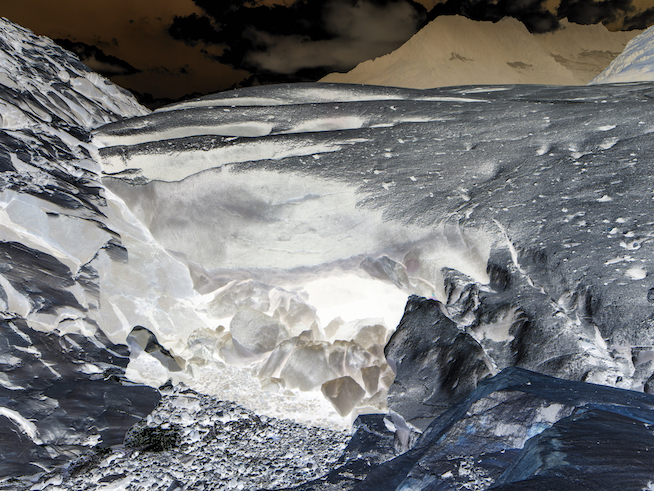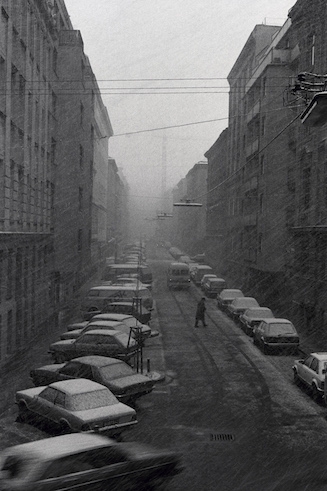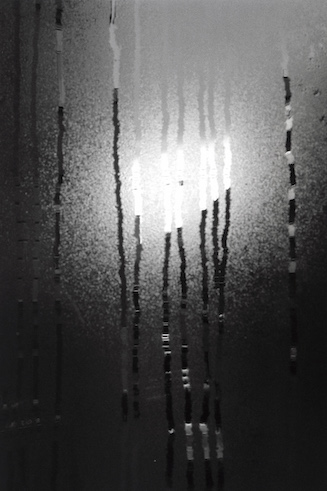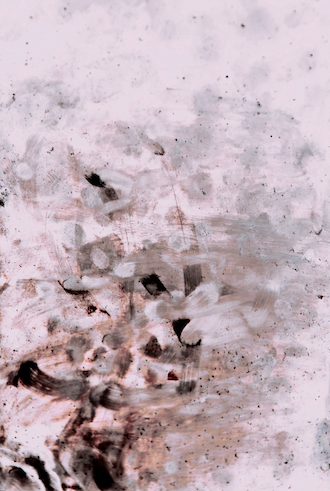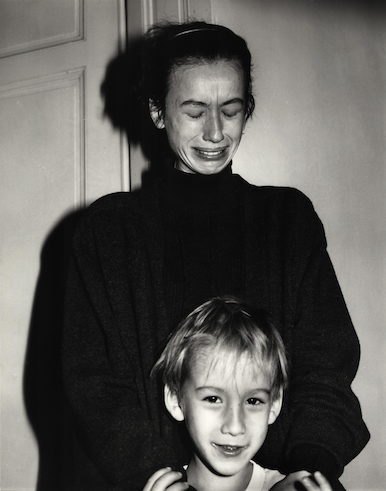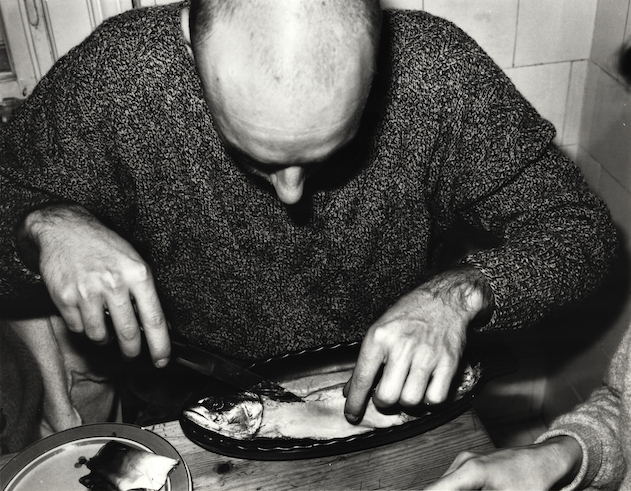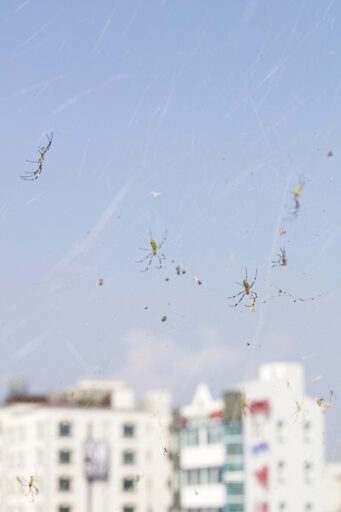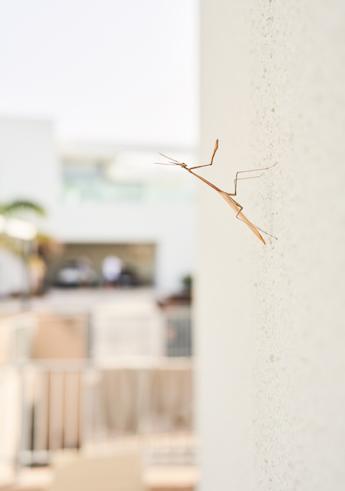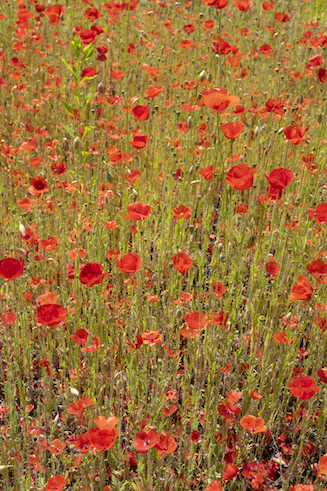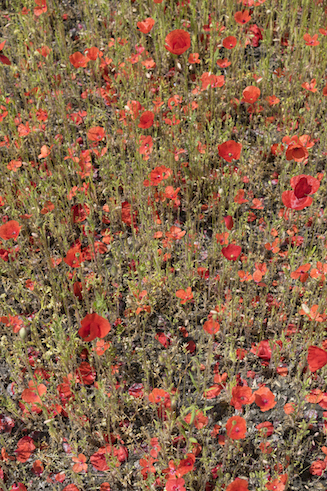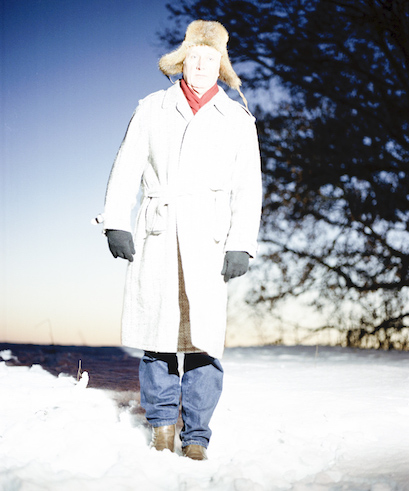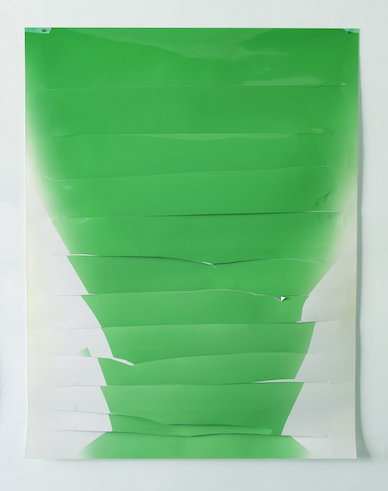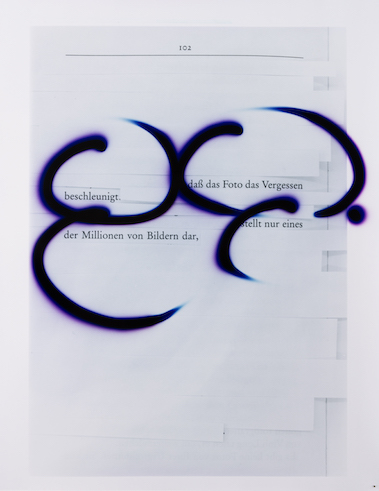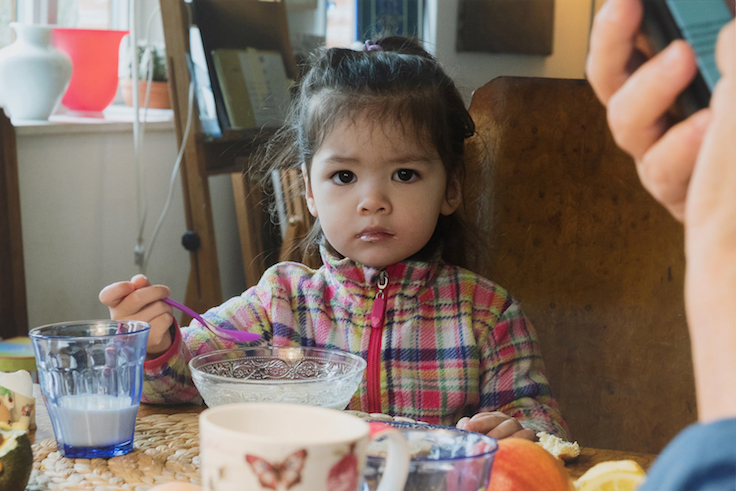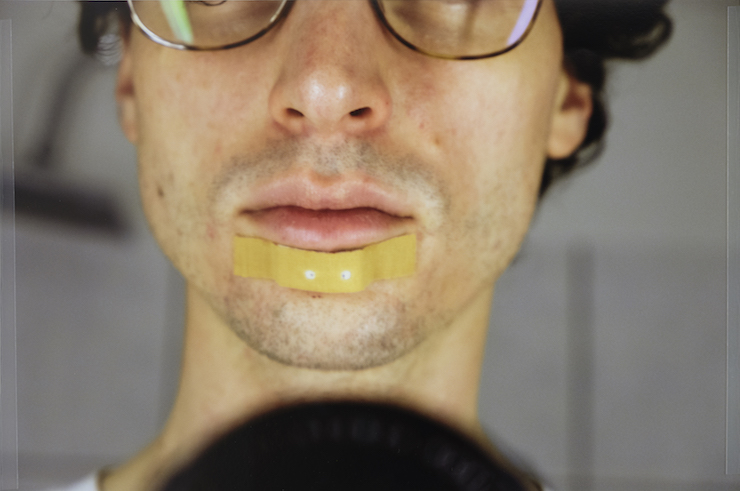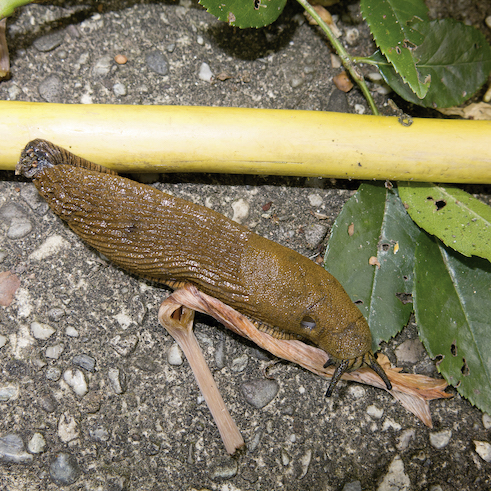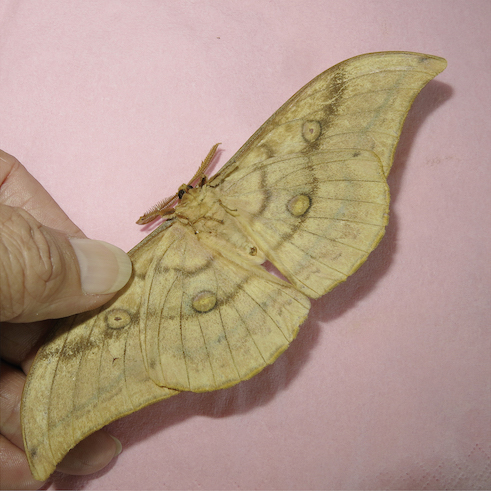Press information
Exposure
Infos
Press preview
15.9.2023, 11 am
Opening
15.9.2023, 6 pm
Duration
16.9. – 12.11.2023
Opening hours
Tue – Sun and bank holidays
10 am – 6 pm
With works by
Laurence Bonvin, Seiichi Furuya, Lisa Holzer, Erich Lázár, Flo Maak, Sophie Meuresch, Georg Petermichl, Stefanie Seufert, Niklas Taleb, Manfred Willmann.
Curated by
Anna Voswinckel
Press downloads

Press Information
The Fields of Focus exhibition series, which runs through 2025, begins with the two-part project Exposure. The series ties in with Camera Austria’s profile as a laboratory for photography and theory that locates art photography within its respective social and political context. In keeping with this, Exposure is a first step toward assessing the status quo of the photographic image as well as the institution and its chosen discourses: what technological and social conditions define photography today? What historical ideas regarding its effects and meanings continue to exert their influence? And how can the contexts and forms of knowledge production associated with photographic works be translated into a contemporary curatorial practice?1
The exhibition is divided into two parts. The first, titled Exposure, opens on September 15, 2023. For the second part, Double Exposure, which opens on November 24, 2023, the existing exhibition—in an analogy to photography’s double exposure—will be supplemented with additional positions that overlap with parts of the first exhibition, offering a commentary on and extension of it. The contexts of the projects presented in this second part will be discussed in a series of artist talks.
Exposure is photography’s basic prerequisite. A photographic image is created when light hits a surface and inscribes itself by leaving a trace—either through the transformation of silver salts into metallic silver, a chemical change in light-sensitive layers, or the conversion of data from an image sensor into bytes of digital information. The indexical quality of analogue photography lingers on in digitally or algorithmically generated images. In Camera Lucida, Roland Barthes speaks of a “tenuous umbilical cord” that physically connects the image and its object of reference.2
The idea William Henry Fox Talbot formulated in his Pencil of Nature (1844–1846), which was startling for its time—namely, that light can cause “changes in material bodies”3—was a cause of concern in the early nineteenth century: the fear was that being photographed could inflict bodily harm. In his memoir When I Was a Photographer, French portrait photographer Nadar addressed his fellow writer Honoré de Balzac’s reservations toward photography; according to Balzac’s “spectral theory,” the human body is enveloped in an infinite number of tiny, overlapping “leaflike skins,” “ghostlike images” the outermost ones of which the daguerreotype captures with its long exposure times, detaches from the body, and transfers to the negative plate—as a result of which “repeated exposures entailed the unavoidable loss of subsequent ghostly layers, that is, the very essence of life.”4
Increasingly, concern over the essence of life turned into a worry that the authentic could be eroded or lost altogether, a fear further intensified today by the growing circulation of digital images. Also linked to photographs, which have morphed into sets of accumulated data, raw material media corporations mine and exploit, are key questions of becoming exposed, of exposing oneself, and of vulnerability. It is precisely this “logic of immediate causation”5 that continually necessitates the contextualization of the photograph. A contemporary reexamination of exposure as the expression of photography’s physical immediacy also means insisting on a sensitivity toward the bodies being viewed and exposed—spelling a reversal of the classic subject–object dualisms inscribed in photography via its mediation and camera perspective, as the contributions of feminist and postcolonial critiques to the photographic discourse have repeatedly shown.6 It is not only the light-sensitive sensor that is exposed; so are those the camera photographs. As are viewers, who are unable to draw back from the image, because in observing the photograph, they are confronted with its reality and relate their own presence to that depicted in the image.7
In recent years, Judith Butler and others have theorized on the question of human and non-human subjects’ vulnerability. She references current emancipation movements that view “common vulnerability” as the starting point for concerted action—and that recognize differences and make new alliances possible, in contrast to identity-political alliances. Butler’s concept of vulnerability aims at the fundamental attachment of the self to the other. Here, again, is the °“umbilical cord” (Barthes) that physically (indexically) connects subject (photographer, viewer) and object (who or what is being observed). Against this background, the works shown in the exhibition are united by a bond with the other that manifests itself as a physical or emotional closeness to the person or thing being looked at, but also, on a level of visual analysis, reveals itself to be a search for the subject’s potential and versatility as well as our world’s relationality.
Exposure (September 16–November 12, 2023)
The group exhibition Exposure begins with works based on the exposure process that address the documentary aspect of photography and question its relationship to reality. Like the exhibition title, Sophie Meuresch’s work Treppe (Reflexion) (2018), hanging at the start of the show, plays with the ambiguity of the concept of reflection, which refers both to light reflecting on a surface and to the act of processing and conveying information. Meuresch’s series Mohn (eins–fünf) (2021) consists of five variously exposed photographs of a poppy field hung in a row, unframed and unprotected. Close in composition, the series is an attempt to use photographic means to objectively capture the poppy’s characteristic features, for instance its extraordinary luminosity and fragility. But the longer we study the different variations, the more the poppy eludes us as a motif—pointing to a mutability that photography is unable to grasp.
Similar considerations prompted Stefanie Seufert to address Marguerite Duras’s essay collection Practicalities in her four-part series sich selber zu sehen (2021). In the essay “The Photographs,” Duras reflects on the function of family photos; in the modern world, where photography is assigned the task of recording (family) history, they accelerate forgetting by replacing subjective memory’s inner images. According to Duras, photography cannot live up to the identity-generating function ascribed to it (“to see oneself”), since it negates the potentiality (of a person). In the form of reproduced text collages, the artist transfers the text and its criticism onto visual motifs that she further exposes using a flashlight. This artistic inquiry into photographic exposure processes has shaped Seufert’s practice for several years, as other works in the exhibition evince.
In looking at the series Soweit das Auge reicht, Wien (1983–84), we follow Seiichi Furuya’s view from the window of his apartment in Vienna. Like Meuresch’s, this black-and-white series consists of varying exposures of an almost identical composition. Furuya’s motif alternates between an open and closed window, changeable weather conditions, and times of day. The view through the closed window is for the most part fogged; because of the weather, the glass pane is covered in condensation resembling a drawing or blur filter. There’s an analogy here to the camera’s matte screen, while in the dark, the pane becomes the photographer’s mirror and reverses the direction of the gaze.
In his latest group of works, Universal Thoughts (or whatnot) (2023), Georg Petermichl takes a look at his family of origin and inquires into the role of photography as a medium for documenting society and forging identity. The large size of the photographs, some of which are hung as unframed hand prints in dialogue with the space, stands in striking contrast to the intimacy of the respective images and the closeness in relationship they reveal, while deliberate over- or under-exposure allows for distance and an openness to interpretation. In the figure of a small ceramic hippopotamus, the artist ironically reflects on his own awkwardness in dealing with his unaccustomed (power) position as photographer in this picture of a family constellation.
In his series Dream again of better Generationenvertrag (2020), Niklas Taleb addresses the conflict between artistic practice and family care work. The work’s title alludes to the effort, which often proves futile, to negotiate better terms for the artist’s (self-)exploitative working conditions. The photographs record everyday situations that reveal the photographer’s parenthood and provide insights into his living situation, habits of consumption, and leisure time as well as into his cultural identity, which is hybrid. Taleb constructs his own frames, which lend the (digital) photographs a body and testify to a sensitivity in handling the photographic image that is analogous to family care work.
In Private Eye (1982–2000), his black-and-white photo documentation of everyday life, Erich Lázár also presents images of private relationships. One motif that particularly illustrates the complexity of family constellations is the portrait of Lázár’s partner and, standing in front of her, their son. The woman’s eyes are lowered, she’s crying, apparently upset at the picture being taken. Her son, standing in front of her and unable to see his mother’s face, smiles happily into the camera. The photograph’s disturbing message seems to be the inequality and asymmetry of care relationships.
Lisa Holzer’s series of what initially seem like abstract color pigment prints is titled Family (2023). The work consists of Photoshopped pictures of fingerprints on a tablet that the artist shares with her son. Although the precision in reproduction suggests that the prints can be linked forensically to one of the two or to their friends, the work itself is marked by superimposition and blurring. Another photograph in the series depicts a person with a tablet, with the reworked and inverted motif giving rise to a painterly quality. Ultimately, Holzer is concerned with the ambivalence between figuration and abstraction, with inscribing by means of a digital device, with questions of closeness and distance. A dialogue with language and with psychoanalysis underlies Holzer’s works, which consist of photographic images and the texts that often accompany them, but are also developed independently.
Another group of works in the exhibition addresses questions of cross-species empathy and thus the dualistic human–nature relationship and its inherent interdependencies—and ultimately the question of who is at the mercy of whom. Over a period of two years, as the title of the 2018/2017 series suggests, Manfred Willmann took daily close-up photographs of plants and animals and the remains they left behind in his immediate surroundings. The images can be read as a tribute to the respective species. The creatures captured are brought eerily close to the viewer. It feels as though we were in communion with the animals, even in the moment they are killed—as if we were the ones they were staring at.
Flo Maak depicts insects, but he deliberately shifts the setting to urban space to shed light on the coexistence of humans and animals and their bodies’ mutual interpenetration. Questioning the anthropocentrism and heteronormativity of the Gaia hypothesis, which adopts the myth of the caring mother to represent the ecosystem, the artistic investigation in Iceland featured in Maak’s series Ground Truthing (2020–present) focuses on the function of volcanoes as participants in the global energy cycle. By inverting the scale to create an analogy between the crater’s opening and a human anus, Maak points to the interdependence between humans and nature, while his motifs of desire and physical surrender break down anthropocentric attributions (of power).
In the global energy cycle, volcanoes and glaciers are intertwined; according to climate scientists, the accelerated melting of the ice—the result of human-induced global warming—will also lead to a greater frequency in volcanic eruptions. In a series of high-resolution photographs accompanied by a soundtrack of field recordings, the video installation Aletsch Negative (2019) by Laurence Bonvin documents the melting of the Aletsch, the largest glacier in the Alps. In formal terms reminiscent of the poetic visual language of analogue animation films, Aletsch Negative uses the multiplication and illusion of movement to make the intensity and acceleration of the melting process palpable. In our encounter with the glacier, we become aware of the ecological contingency that is ultimately leading to its disappearance.
Double Exposure (November 25, 2023–January 28, 2024)
In analogue photography, when a negative is exposed to light multiple times, it’s referred to as a double exposure. Multiple exposures occur when the photographer accidentally or intentionally fails to advance the film in the camera, re-exposing material that has already been exposed to light. In this way, the negative becomes inscribed with several photographic imprints that can be spaced out in time. In the exhibition Double Exposure, the title serves as a metaphor for processes of memory politics that are explored and transformed through randomly found images or specific archive viewings. What does it mean to expose oneself repeatedly to inscription? Four very different artistic practices are juxtaposed here; each of them employs individual methods that visually (re)write unavailable or repressed experience and, in doing so, react to the dispositives of the respective media and the aesthetics of the image.
Relating to the discourse concerning the restitution of cultural assets and the reorientation of the collections in European institutions, Sara-Lena Maierhofer’s series Kabinette (2018–19) examines the role of photography as an archival medium that, in historical terms, is closely conjoined with the colonial perspective. Against this background, and from a white European perspective, how can one decolonialize one’s own artistic practice? By relocating documentary processes to the darkroom, where the artist uses direct exposure on various materials to re-enact the view into the museum depot, Maierhofer sets in motion a process of reflection on questions of documentation and the evaluation of (colonial) archives.
An investigation of colonialism’s complex, transnational political entanglements and its traumatic effects on (family) biographies forms the starting point of Sim Chi Yin’s multimedia practice. Inspired by research into the life of her grandfather, whom the British colonial authorities deported to China and murdered there in 1949, the artist spent ten years studying the Malayan Emergency, the anti-colonial war of 1948–1960. The history of the deportation and the complex diasporic movement between China and Southeast Asia are interwoven in the two-channel film The Mountain That Hid (2022). The Suitcase Is a Little Bit Rotten (2023) is an artistic intervention into a colonial picture archive. As the basis for her work, the artist used found laterna magica glass slides from the late eighteenth and early nineteenth centuries, designed in the UK to advertise the British Malaya colony. By inserting her grandfather and her child into the glass slides in the form of barely perceptible details, Sim subjectifies the objectifying gaze inherent in colonial projection and expands the photographically mediated, cross-generational process of memory work.
Rebekka Bauer’s mixed-media installation Die Aufstellung (The Constellation, 2020–present) brings together hundreds of homemade metal objects from her grandfather’s estate and a collection of private photographs from the National Socialist years with family photos spanning several decades. Die Aufstellung is an experimental arrangement that changes depending on the exhibition context; the work inquires into the artist’s relationship to her grandfather’s legacy, which is historically and psychologically complex. Using methods of composition and montage, the installation searches for clues as to how unprocessed history and violence carry through family biographies and leave their mark on bodies and relationships. As a room-sized installation, Die Aufstellung is linked with the works in the first part of the exhibition and seeks in the superimposed traces of other bodies connections between narrative threads.
In a joint artistic research project, Oliver Husain and Kerstin Schroedinger combine material experiments, historical research, and performance into a multi-channel installation titled DNCB (2021). The chemical dinitrochlorobenzene, used for color developing in photo labs, was discovered by doctors and patients in San Francisco in the 1980s during the AIDS crisis as an alternative treatment for Kaposi’s sarcoma; in risky experiments, it was directly applied to the skin. In their video installation, the artists draw parallels between the surfaces of skin and film, between color developing, exposure, poisoning, and healing, between self-medication and independent film developing labs. In the process, DNCB uncovers a little-known history of research and a movement that are linked in a unique way to the history of analogue photography.
The four projects in the Double Exposure part of the exhibition introduce a second level of reflection into the show that also functions in a spatial sense. In doing so, they comment on and augment the works of the first part; they also point to blind spots. The juxtaposition and superimposition give rise to a new pictorial space that can also be understood as a reflection on exhibiting (i.e., exposing) photographic works.
1 Anna-Kaisa Rastenberger and Iris Sikking, Why Exhibit? Positions on Exhibiting Photographies (Amsterdam: Fw: Books, 2018), p. 8.
2 Roland Barthes, Camera Lucida (London: Flamingo, 1984), p. 110.
3 William Henry Fox Talbot, The Pencil of Nature (New York: Da Capo Press, 1969), p. 27.
4 Nadar, My Life as a Photographer, quoted in Rosalind Krauss, “Tracing Nadar,” October, Vol. 5, Photography (summer 1978), pp. 29–47.
5 Diedrich Diederichsen, Körpertreffer: Zur Ästhetik der nachpopulären Künste (Frankfurt am Main: Suhrkamp, 2017), p. 9 (transl. A. S.).
6 Jonathan Beller, “Camera Obscura After All: The Racist Writing with Light,” in: The Scholar and Feminist Online, issue 10.3 (Feminist Media Theory. Iterations of Social Difference), summer 2012.
7 Steffen Siegel, Belichtungen: Zur fotografischen Gegenwart (Munich: Wilhelm Fink, 2014), p. 9 (transl. A. S.).
Anna Voswinckel
Images
Publication is permitted exclusively in the context of announcements and reviews related to the exhibition and publication. Please avoid any cropping of the images. Credits to be downloaded from the corresponding link.

